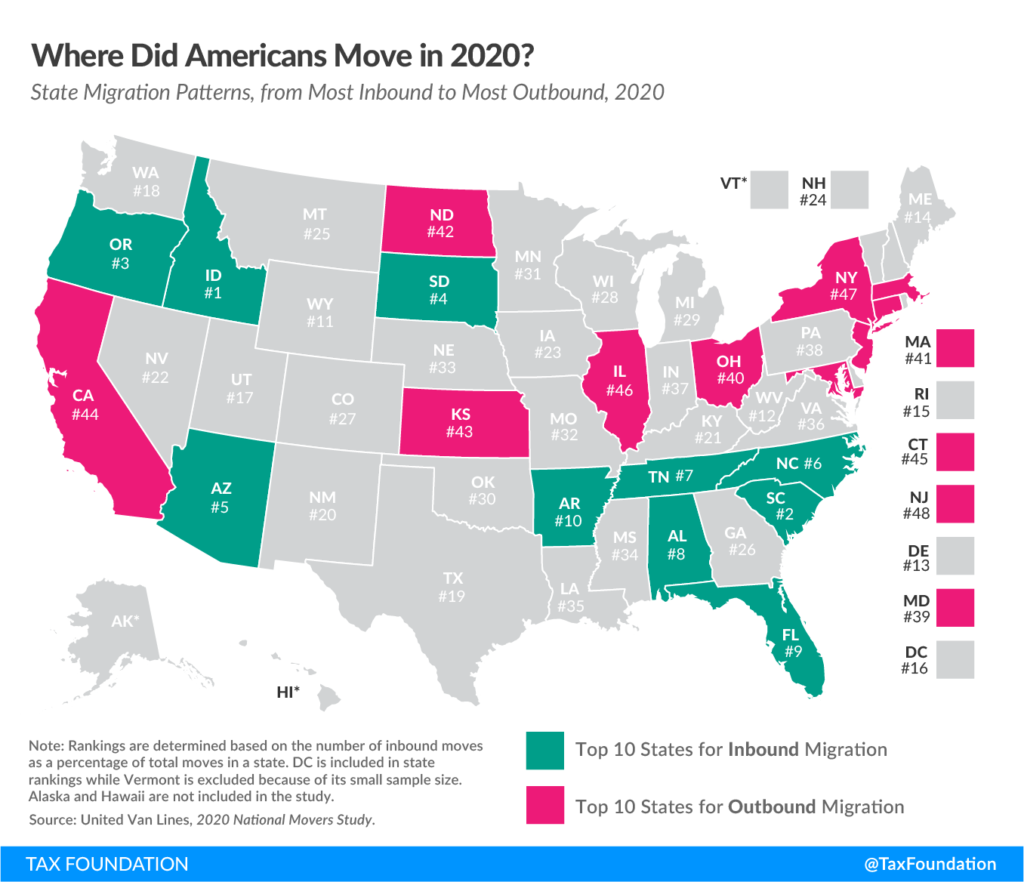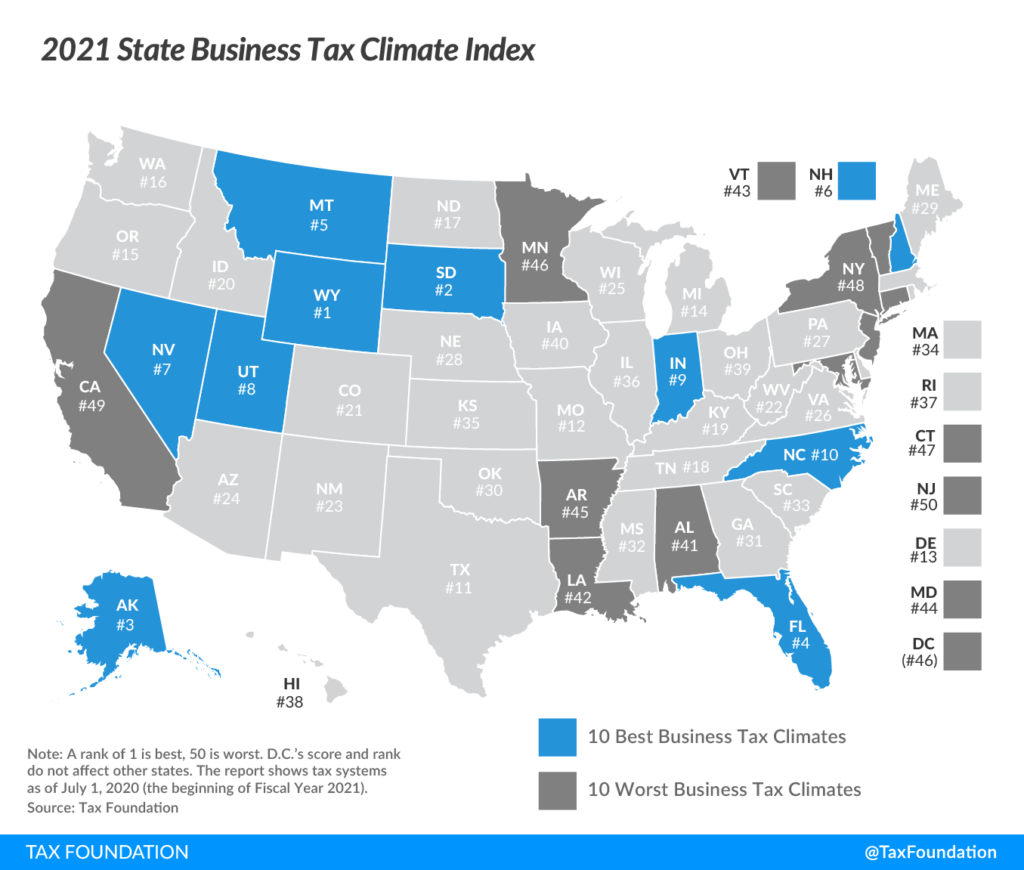How Americans moved in 2020
Numerous factors affect economic outcomes; migration is one of those factors. Periods of inbound migration, for instance, can be associated with growth in output due to the increased availability of workers. On the other hand, accelerated outbound migration will reduce the pool of human capital possibly contributing to a decline in output. Migration patterns also affect other economic factors like tax revenues.
Outside of impacting economic outcomes, migration patterns can also act as a signal of the relative attractiveness of a region. While people have different motivations for moving, generally people tend to move towards areas that are more economically and socially viable. This is why regions that are associated with more favorable economic conditions tend to see more inbound migration than outbound.
2020 Migration patterns
On January 4th, United Van Lines released their Annual Migration Study for 2020 that helps us analyze how people moved among the states. According to the new study, in 2020 migration patterns remained the same among the states with Americans moving southbound and westbound. The coronavirus pandemic also accelerated some moving decisions.
Among the individual states, (1) Idaho (2) South Carolina (3) Oregon (4) South Dakota, and (5) Arizona were the 5 states with the most inbound moves. New Jersey, New York, Illinois, Connecticut, and California, however, were the top 5 states with the highest outbound migration.

Source: The Tax Foundation
Taxes and Migration patterns
While state tax climate is not a listed reason in the survey, there are some interesting trends that we can draw by looking at the results. According to an analysis done by the Tax Foundation, among the 10 states that were chosen as desirable by retirement movers, 9 either have no social security taxes, exempt a large sum of it, or have no income tax at all.
Furthermore, based on the Tax Foundation’s ranking of State Business Tax Climate,
Four of the 10 worst-performing states on this year’s Index are also among the 10 states with the most outbound migration in this year’s National Movers Study (New Jersey, New York, Connecticut, and California).
Seven of the top 10 ranked inbound migration states also rank in the top half of states on the Index, which measures tax structure. And the three which do not (Alabama, Arkansas, and South Carolina), while having significant room for improvement in the structure of their tax codes, generally feature low tax burdens.
Conversely, all but one of the top outbound states rank in the bottom third of the Index, the only exception being North Dakota (17th), where outbound migration has been driven by a decline in energy markets.

Source: The Tax Foundation
Minnesota
In 2020, Minnesota was among the states that experienced net outbound migration. Our state experienced the highest net outbound migration among movers whose main reason for moving was either retirement or seeking a job. Minnesota, additionally, lost residents of every age category 45 and up. While the loss of older residents can be blamed on retiring individuals seeking warmer weather, that does not explain our loss of individuals in their prime working age. Other factors like uncompetitive taxes and an unfriendly environment for businesses are possible reasons for Minnesota’s lack of opportunities for its residents.